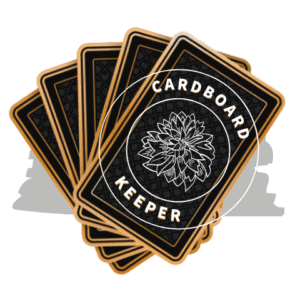When I started playing Magic The Gathering over 10 years ago, I had no idea what fetchlands were and why they were considered good. However, when I started becoming interested in playing MTG’s older formats, I quickly discovered why fetchlands are so good.
As a general rule, fetchlands are good as they add consistency to Magic The Gathering decks that use more than one color. Fetchlands can retrieve “Dual Lands” from a player’s deck that can produce multiple types of mana, allowing players to cast spells of different colors.
However, there are more benefits to fetchlands than just that.
As the card pool in older Magic The Gathering formats is far larger than formats such as standard, fetchlands in formats like Modern and Legacy have more benefits than you first might think.
If you are looking to understand why are fetch lands good, then here are few things to know about what makes them so powerful.
Before we jump into what makes a fetchland so good, if you aren’t really sure what a fetchland is or how many of them there are, then definitely check out my beginner’s guide to fetchlands before you read the rest of this article. The quick guide will set up to know everything you need to about what a “fetchland” is – What Are Fetch Lands? MTG Fetch Lands: Types, Rules, List
Fetching Dual Lands
This is where “Fetch” Lands get their name from in Magic The Gathering.
Fetchlands have the ability to go get, or fetch, another land from a player’s deck.
Let’s take a look at the rules text of one of these fetchlands, in this case, “Wooded Foothills“.

Pay 1 life, Sacrifice Wooded Foothills: Search your library for a Mountain or Forest card, put it onto the battlefield, then shuffle.
Gatherer – Magic: The Gathering[1]
Wooded Foothills explicitly states that by sacrificing it and paying 1 point of life, we can go get any card that has the Mountain or Forest subtype on it.
This means you can get any of the following cards from your deck and put them into play.

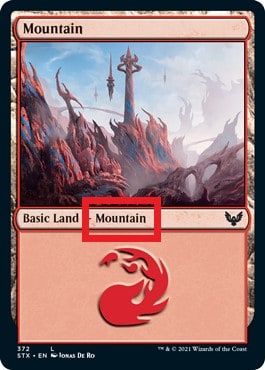
At first glance, it doesn’t seem that impressive.
On the surface, it appears to just be a card that can transform itself into either a basic Mountain or a basic Forest. It’s certainly better to have the option to choose between the 2 cards during a game, especially when you might need one type of mana more than the other.
But what if you didn’t have to choose at all?
The power of fetchlands is that it lets you get any 1 land that contains the specified land subtype. In the case of Wooded Foothills, it specifies Mountain or Forest.
Therefore, instead of getting basic lands, you can get any of the following cards below from your deck with Wooded Foothills.
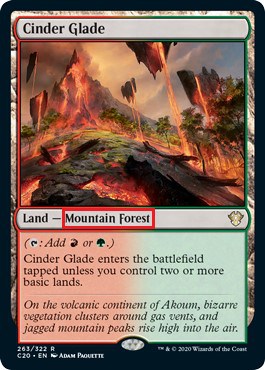
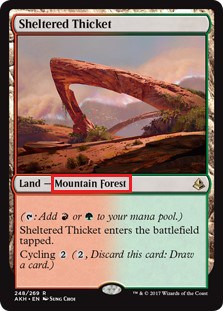
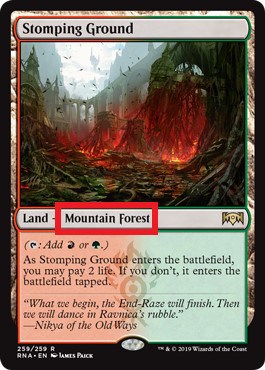
You’re starting to see the power of fetchlands.
Lands that contain 2 subtypes are normally referred to as “Dual Lands” in Magic and when they work together with fetchlands in a deck, they unlock new levels of deck consistency.
By fetching one of the lands above we didn’t need to choose between a Mountain or a Forest card, instead, we can get a card that can produce both red and green mana! – Why choose when you can have it all?
The option to always have both colors of mana available to you when playing a game drastically increases the consistency of a Magic The Gathering deck by making sure you can always cast your spells with whatever mana you may need.
However, the power of fetchland consistency doesn’t just stop with 2 color Magic decks, in fact, where fetchlands really shine is with 3 color decks.
Sticking with our example of Wooded Foothills, remember, Wooded Foothills can get any land that has a Mountain or Forest subtype – either is fine, you don’t need both.
Therefore, if you are playing a 3 color Magic deck with Wooded Foothills in it, this fetch land can actually get any of the following lands.
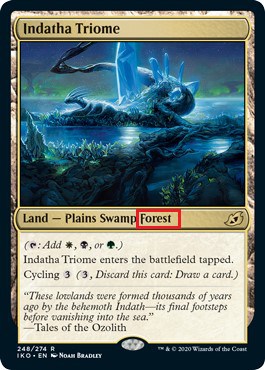
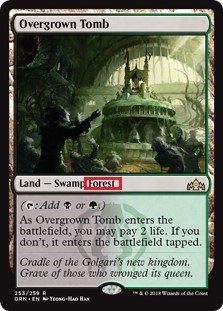
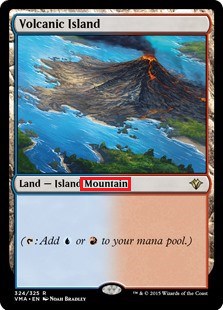
Notice how all of the above cards have either “Mountain” or “Forest” in their subtypes.
This means Wooded Foothills is free to get any color combination it wants as long as the land contains the specified land subtype – that includes lands like “Indatha Triome” which is a “Tri Land” (can produce 3 different colors of mana).
When building decks of multiple colors of mana, what makes fetchlands so good is how they partner up with other lands to make sure you always have whatever color of mana you need during a game.
If you’re able to cast your spells, you can’t play the game!
Shuffle The Deck
Every time you use a fetchland and go get another land from your deck, you will be required to shuffle your deck.
Why is that so important?
By itself it’s not, in fact, it can get somewhat annoying having to shuffle your deck every time you want to use one.
However, a common theme we keep seeing with fetchlands is when combined with another card, their power level skyrockets!

The card “Brainstorm” is the posterchild for why fetchlands shuffling your deck can be really powerful.
Brainstorm lets you draw 3 cards for 1 mana (that’s incredible value!), however, you are forced to put 2 cards in your hand back on top of your deck… Oh…
You went from drawing 3 brand new cards from your deck, to not drawing any new cards for the next 2 turns until you get through the 2 cards you just put back on top of your deck. That is of course, unless you have a fetchland…
If you use your fetchland after casting Brainstorm, you can say goodbye to those 2 cards stuck on top of your deck and shuffle them away after you go get your new land with your fetchland!
This benefit doesn’t just stop at Brainstorm though – check out the cards below.
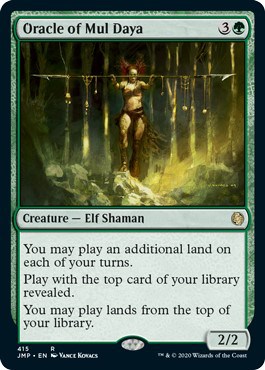
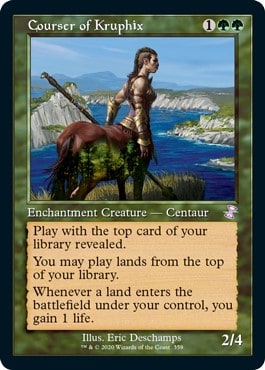
“Oracle of Mul Daya” and “Courser of Kruphix” have you play the game with the top card of the deck revealed face up and if it happens to be a land, you can put it directly onto the battlefield from your deck without having to draw it.
If you have one of these in play and the top card of your deck isn’t a land, then fetchlands to the rescue!
By searching and shuffling your deck through the use of a fetchland, you get a chance to chance the top card of your deck to be a land for Courses of Kruphix or Oracle of Mul Daya.
Never underestimate the power of a shuffle effect that is essentially free from a land and not a actually spell in your deck – It’s no accident that fetchlands and Brainstorm are some of the most played cards in Magic’s most powerful formats.
Landfall and Friends
“Landfall” is an ability on some Magic The Gathering cards that activates whenever a land enters the battlefield under your control.
Although Landfall is the most common way you will see this effect described on Magic cards, there are cards without the keyword Landfall on them that still have abilities trigger when a land enters play.
A landfall ability triggers whenever a land enters the battlefield under your control for any reason. It triggers whenever you play a land, as well as whenever a spell or ability puts a land onto the battlefield under your control.
Gatherer – Magic: The Gathering[2]
Take for example our previously mentioned Courser of Kruphix that causes you to gain 1 life whenever a land comes into play.

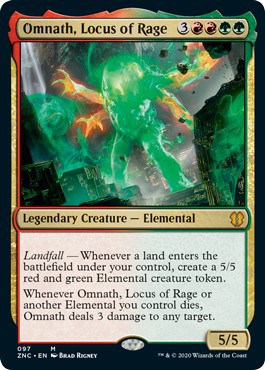
So how do fetchlands supercharge these abilities?
Normally, you can only play 1 land a turn in Magic The Gathering. That means if you are playing a card like “Omnath, Locus of Rage”, you get 1 opportunity on your turn to make a 5/5 Elemental creature token each turn…
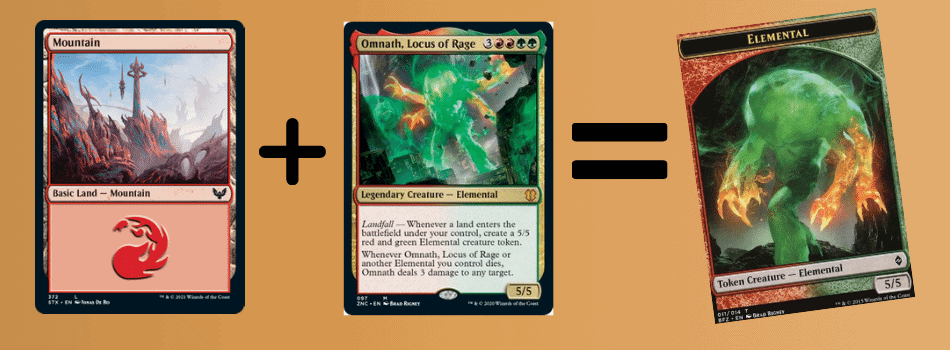
…Well… Unless you have a fetchland – then you just get break the rules!
Fetchlands allow you to have 2 lands come into play during the same turn.
You can play your fetchland as the 1 land you are allowed to play on your turn which will cause any Landfall abilities to trigger – like in the example above.
But on top of this, you can immediately active your fetchland to go get another land. Since you are not technically playing that extra land from your hand its permitted to enter the battlefield and gets around the “1 land per turn” rule.
The extra land entering the battlefield from your fetchland will still trigger Landfall!
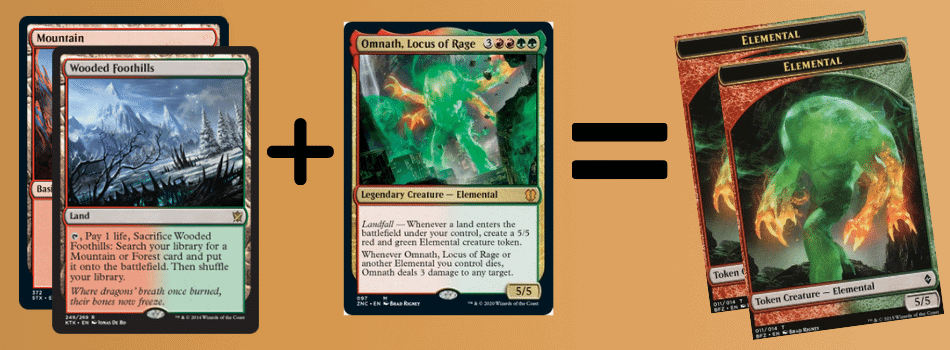
As you can see, when it comes to abilities that trigger when lands enter the battlefield, fetchlands are at a premium.
If you ever find yourself playing against an opponent with Landfall cards, keep your eyes on the types of lands they are playing – otherwise, you might quickly be overrun with an army of giant elementals!
Thinning The Deck
When you play with fetchlands, you are essentially reducing the number of cards in your 60 card deck.
Whenever you use a fetchland in a game of Magic, you are pulling another card out of your deck and onto the battlefield. This means fetchlands reduce the amount of cards left in your deck and statically decrease the likelihood that you will draw lands from the top of your deck.
In theory, this should make you more likely to draw spells that you cast against your opponent and make you less likely to draw too many lands – an occurring known as “Flooding” in Magic The Gathering.
A very oversimplified way of thinking about the number of cards in your starting deck when using fetchland can be seen as:
- Starting deck without Fetchlands = 60 Cards
- Starting deck with 4 Fetchlands = (60 – 4) Cards
- Starting deck with 8 Fetchlands = (60 – 8) Cards
All of the examples start with 60 physical cards in the deck, but the decks that have fetchlands could be thought have of as starting at a virtual 54 or 52 cards.
Now the statically relevance of reducing the number of lands in you deck to increase a better spell-to-land ratio of drawn cards in a game, has been a hotly debated topic in the Magic community for years now.
Many people argue that having to pay 1 point of life to use fetchelands in order to reduce, or “thin“, the about of cards in your deck isn’t worth the potential benefit gain from doing so.
The statically impact of using fetchlands increases significantly the more fetchlands you use and the more cards that you have drawn in a game.
Regardless of what side of the debate you fall on, using fetchlands do to some degree increase the consistency of your Magic decks.
Fetch into… Creature?
Have you ever wanted to block your opponents attack using a land as a surprise defender?
With some fetchlands, you can!
Arguably, one of Magic’s most controversial lands is also a creature – “Dryad Arbor”.
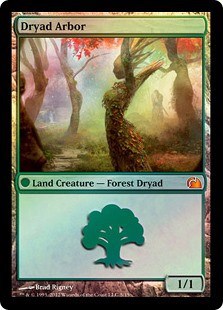
It may look like a land to some, but pay careful attention to that unique card type combination and power/toughness in the bottom right-hand corner of the card.
You only have to do a quick Google search to see how many people within the Magic community have pushed for this card to be banned from the game.
As you may have picked up on already, not only is Dryad Arbor classed as both as “Land” and a “Creature”, but it also has the subtype of “Forest“.
That means any fetchland that is allowed to go get a land with the subtype Forest, can also go get this creature from your deck and place it onto the battlefield.
This card reached the pick of controversy back in 2018 at Grand Prix Lyon, when a Dryad Arbor was hidden from sight from professional player Gabriel Nassif as he attacked his opponent.
You can watch this piece of Magic history unfold before your very eyes in the video below.
Let this video be a warning to all Magic players that play Magic formats that have both fetchlands and Dryad Arbor legal in them.
Due to events like this, the Magic The Gathering competitive rules community now made it mandatory on where a card like Dryad Arbor can be placed on the battlefield.
If your opponent has an empty battlefield but a fetchland land that go get a card with the Forest subtype, the coast might not be as clear as you first think – Caution is advised!
Filling The Graveyard
Some cards in Magic want you to have more cards in your graveyard.
Fetchlands can help with that too!
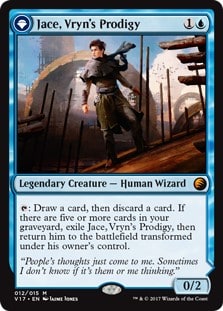
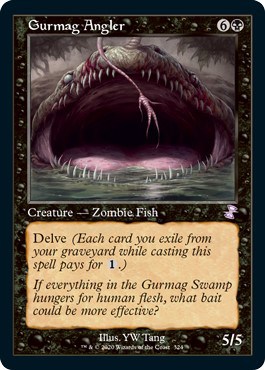
Magic cards that use keywords such as “Delve” can be cast faster if you have more cards in your graveyard.
You can exile cards to pay only for generic mana, and you can’t exile more cards than the generic mana requirement of a spell with delve.
Gatherer – Magic: The Gathering[3]
It’s not uncommon to see cards like “Gurmag Angler” in some of Magic’s older formats come down onto the battlefield as early as turn 2 or 3 despite it costing 7 mana!
Fetchlands help with this process as every time you use a to get another land from your deck, the fetchland will then be put into your graveyard. With a combination of cheap spells and fetchlands it doesn’t take a whole lot of work to fill your graveyard and start casting giant zombie fishes!
So why are fetchlands good? Because they just do so much for you in a game of Magic that it’s no wonder that almost every deck that has the option to play fetchlands does!
If you play Magic The Gathering for long enough, then it’s unavoidable – At some point you will find yourself checking out the prices for a playset of fetchlands to add to your collection.
If you are interested in finding out more about why exactly fetch lands cost as much as they do, you can check out my post about it here – “Why Are Fetchlands So Expensive? Magic The Gathering Guide”
Not only do fetchlands offer a greater level of consistency to one of Magic’s most important aspects of the game, your mana base, but they also assist in numerous other ways.
The best piece of advice I can give to players who manage to get a hold of fetches to add to their collection is, do NOT sell or trade them away!
Trust me, it may be tempting now, but at some point down the line, you’ll need those fetchlands again to build whatever deck you are wanting to play next.
Fetchlands are just that good!
